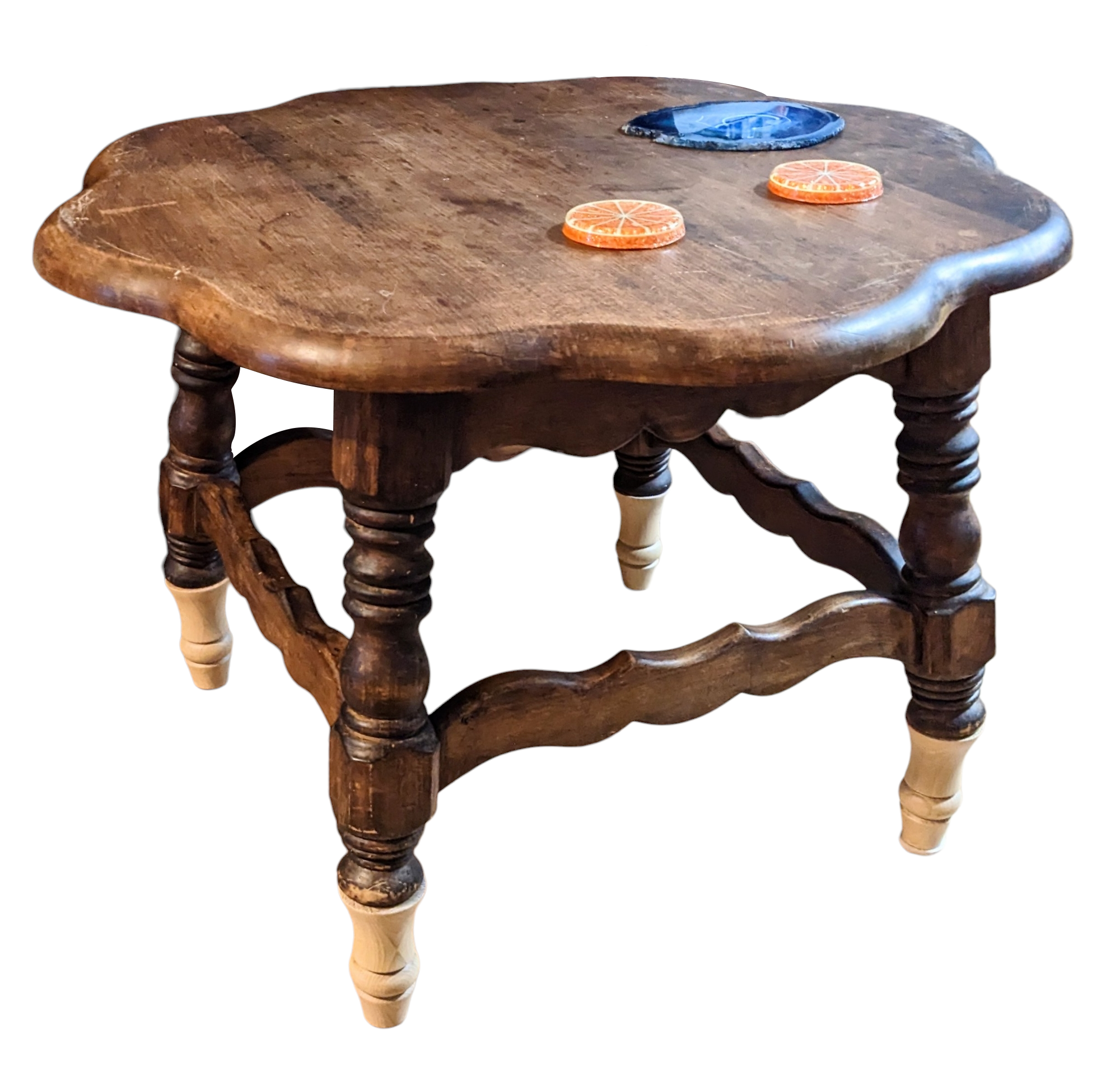I definitely recognize that this is a first world problem, but many of the used furniture pieces I buy are not Roomba accessible. This cute little (floral shaped?) table that I got for $10 at a garage sale has stabilization bars that prevent the robot vacuum from cleaning underneath it, so kitty floof and dust collects until I can get underneath there with a small broom.
To solve this I knew I wanted to raise the table, especially because it was already low to begin with. But I didn’t necessarily want to buy anything new to raise it up. I personally believe in reusing as many materials as we can to reduce our environmental impact. This goal also provides opportunities for creativity. For example, I spent several months keeping an eye out in the bins and estate sales for wood pieces that I could repurpose for this table. They didn’t even necessarily have to be table legs (I looked at four identical wood coaster holders in the bins and decided to pass). But, when we had to drive up to IKEA recently for a new mattress, I wanted to check the AS-IS section for anything we could potentially use for our house. This isn’t necessarily buying “used” but gets us farther away from buying new DIY supplies. In the parts and pieces section there appeared a set of 4 solid wood sofa legs being sold as a set for $5. I grabbed them thinking I could try them on the table and see if they fit.
After I opened the box I realized that the sofa legs (these ones) needed cutting to get them to be identical for a table, so I measured the diameter of the bottom of the table feet and did my best to try and match the size of where I cut the legs. Screws and other hardware also needed to be removed but that was fairly straightforward with my set of hex wrenches. I then sanded the cut edges.
To attach the legs I bored a hole in the bottom of each table leg and in the top of each IKEA leg and glued a dowel in between to connect them. I’m not sure if that is the official correct way to do this but I had extra dowels I purchased from an estate sale. The table legs did already have small holes from previous floor protector attachments so a few of the holes were off-center, resulting in a slightly wonky alignment of the bottom legs. Still, I like how it turned out! The table is kooky, definitely imperfect, made of reused materials, and still Roomba-friendly.
For this project I definitely needed patience, but reused items always show up eventually!





























